The famous World Heritage Site of Angkor Wat is located near Siem Reap, Cambodia.
The ruins of Angkor are scattered throughout the area and we spent three nights in Siem Reap to tour around. On the first day we visited Angkor Wat.
- Cycling from Siem Reap
- Buying tickets to the Angkor sites
- About Angkor Wat
- Is an afternoon visit to Angkor Wat better?
- Crossing bridges
- West Gate
- Approach road and Library
- Platform to the three-storey corridor
- First corridor
- Cross Corridor
- Second corridor
- Third corridor and central shrine
- After visiting Angkor Wat, visit Angkor Thom
Cycling from Siem Reap
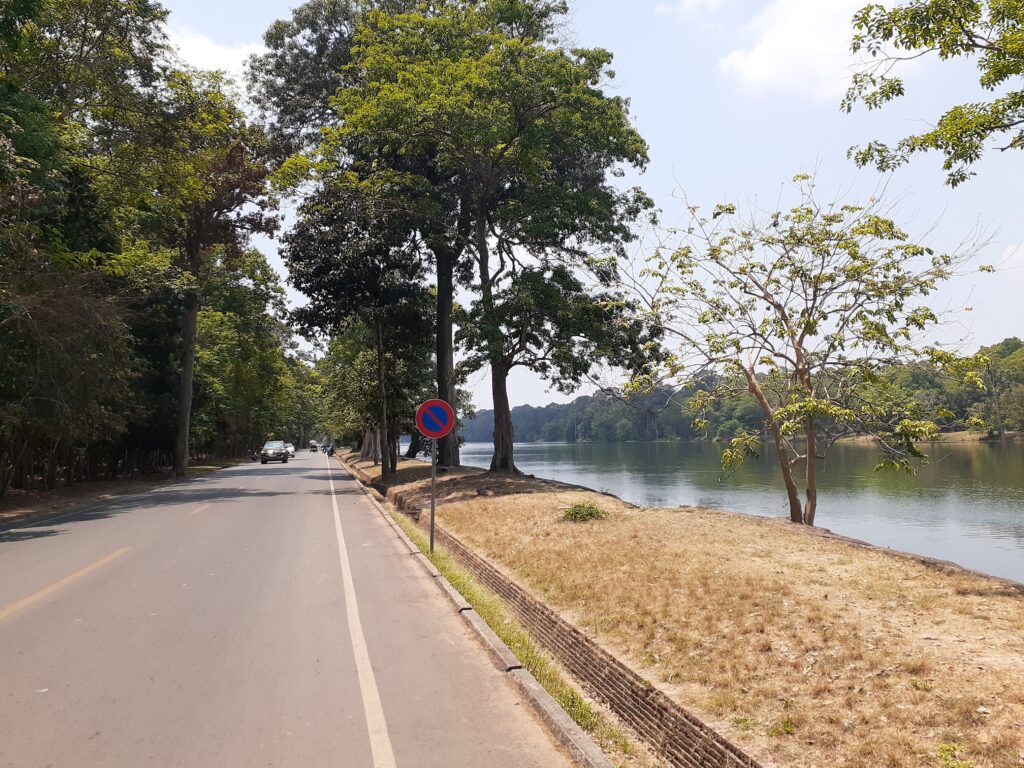
Angkor Wat is just a few kilometres from Siem Reap, Cambodia. The ticket includes visits to many sites besides Angkor Wat, which are scattered around Siem Reap and difficult to visit by foot.
For this reason, many travellers join tours or charter tuk-tuks to visit Angkor Wat. We decided to rent bicycles from the guesthouse where we stayed and visit the ruins.
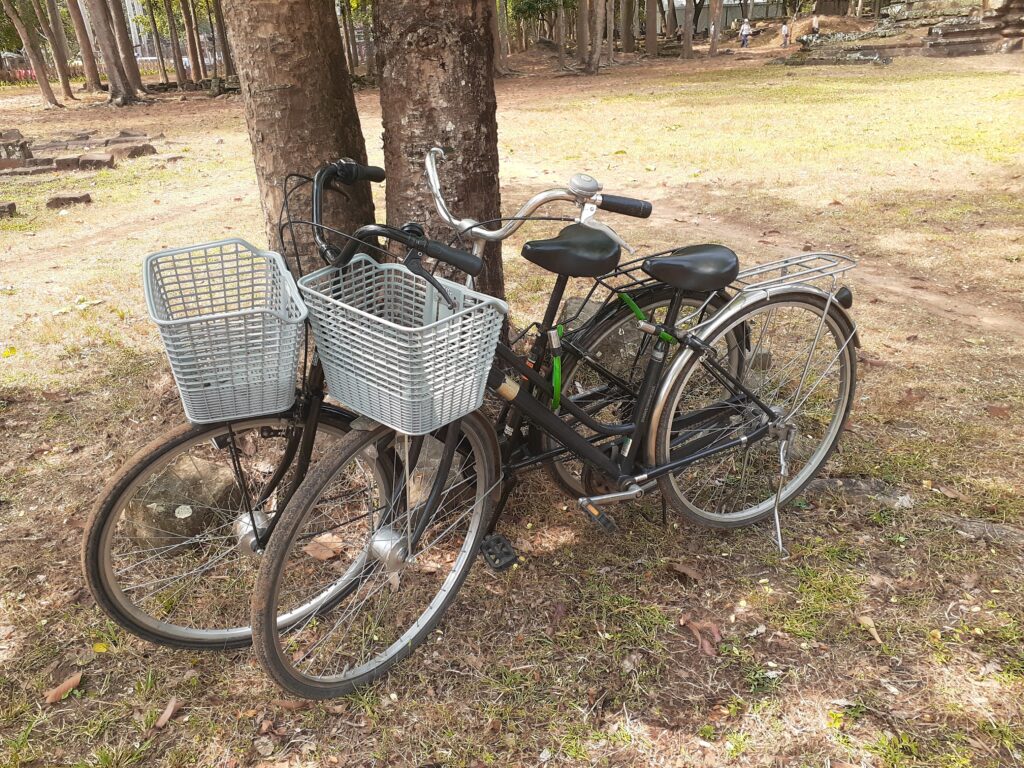
There are plenty of accommodation options in Siem Reap and it is not difficult to hire a bicycle or motorcycle. We were able to hire bicycles for USD 2 per day. They are classic Asian city bicycles, but they were well maintained and not too uncomfortable to ride.
Buying tickets to the Angkor sites
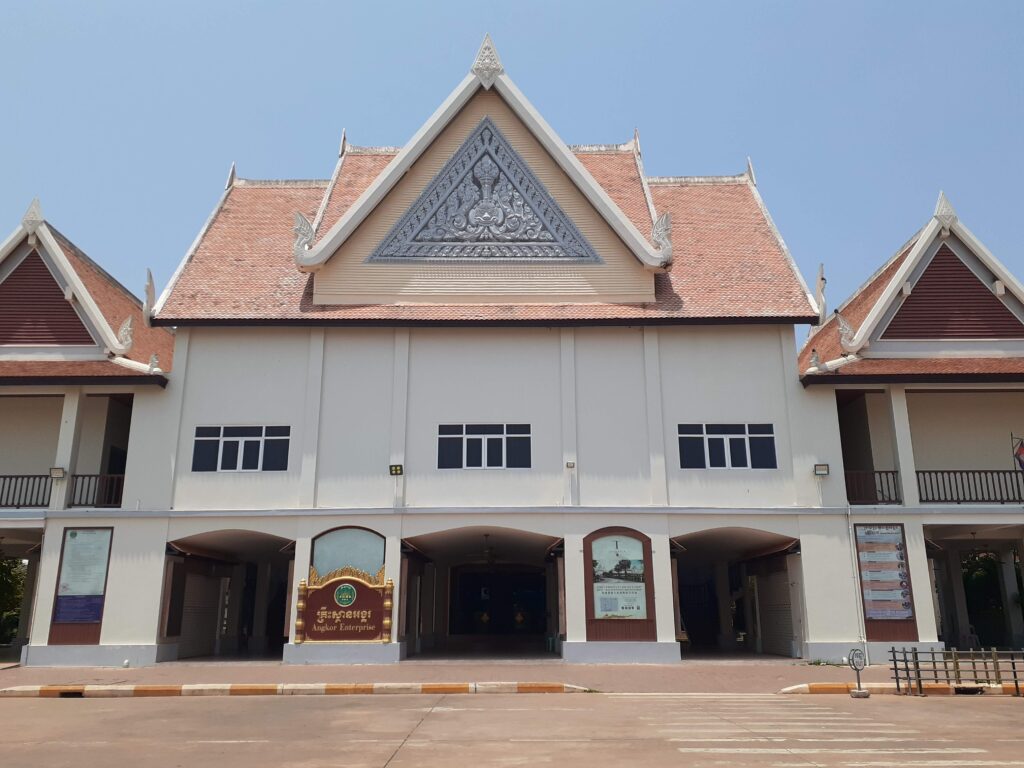
Before you can visit Angkor Wat with your bicycle, you need to buy your tickets!
Please note that entrance tickets for Angkor Wat and the monuments cannot be purchased at Angkor Wat.
Entrance tickets for Angkor sites are purchased at the ticket office in the city.
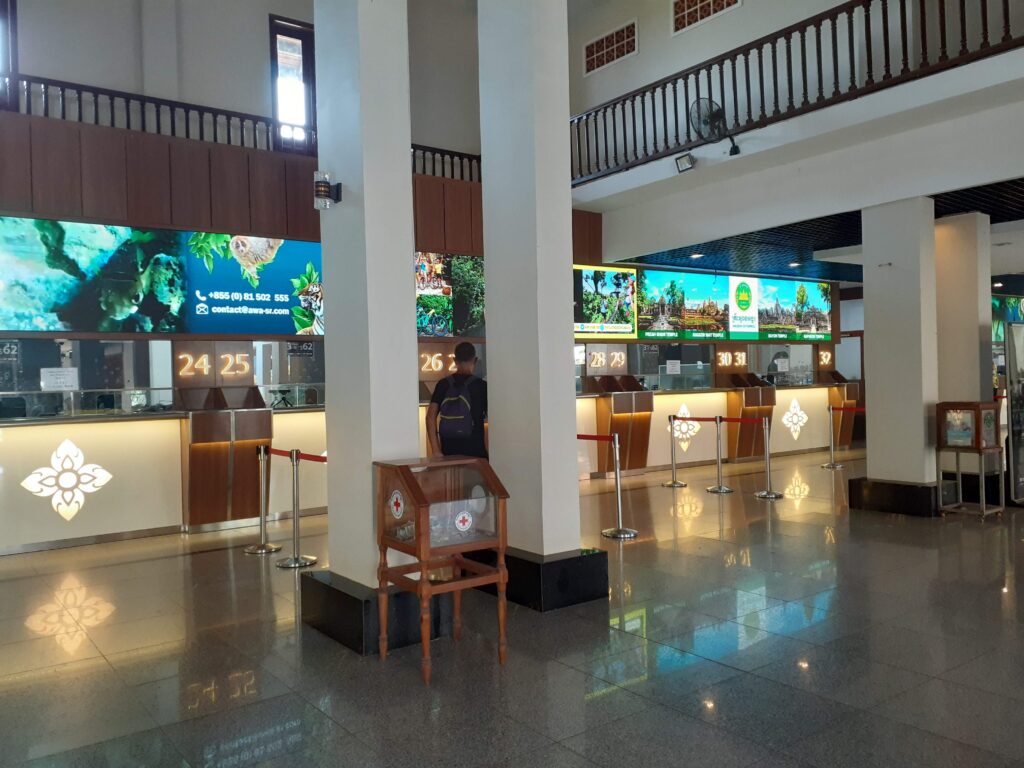
When you enter the ticket office, you will see many ticket counters.
There are one-day, three-day and seven-day ticket options. We bought a three-day ticket, which is valid for seven days and can be used for three of those days. Non-consecutive three-day periods are also possible. The price was USD 62 per person.
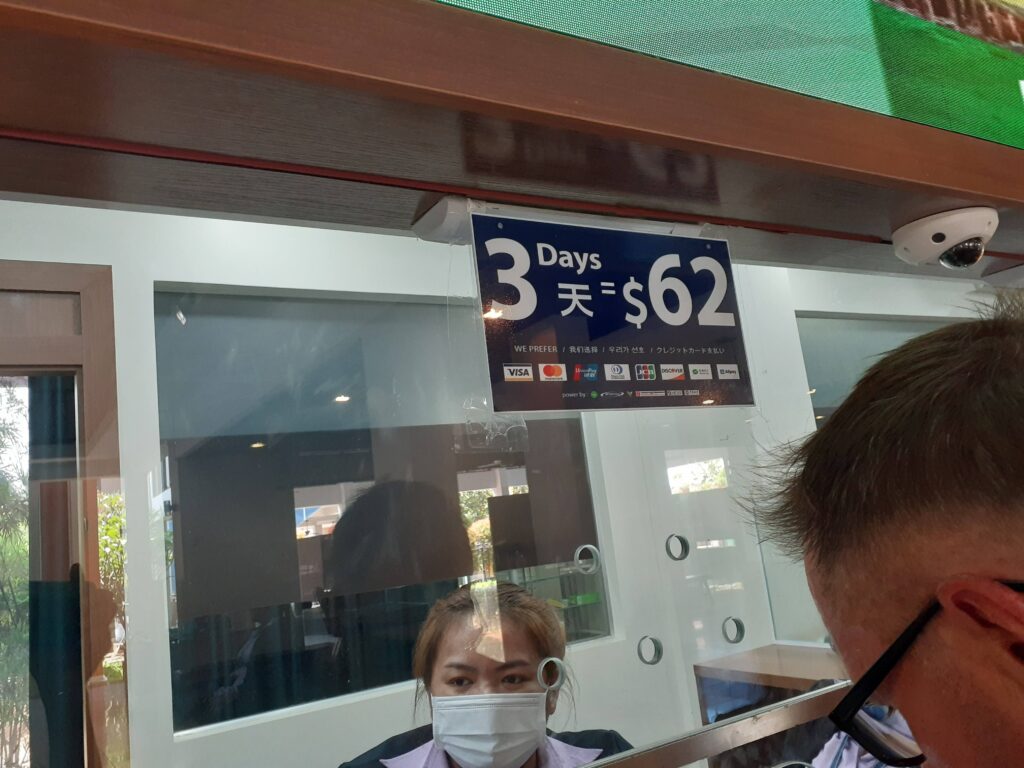
Actually, we regretted later that we should have bought the 7-day ticket, but we didn’t know that at the time…
There is a camera at the counter and you are photographed when you buy your ticket. Your photo will appear on the ticket. Credit cards are accepted for payment.
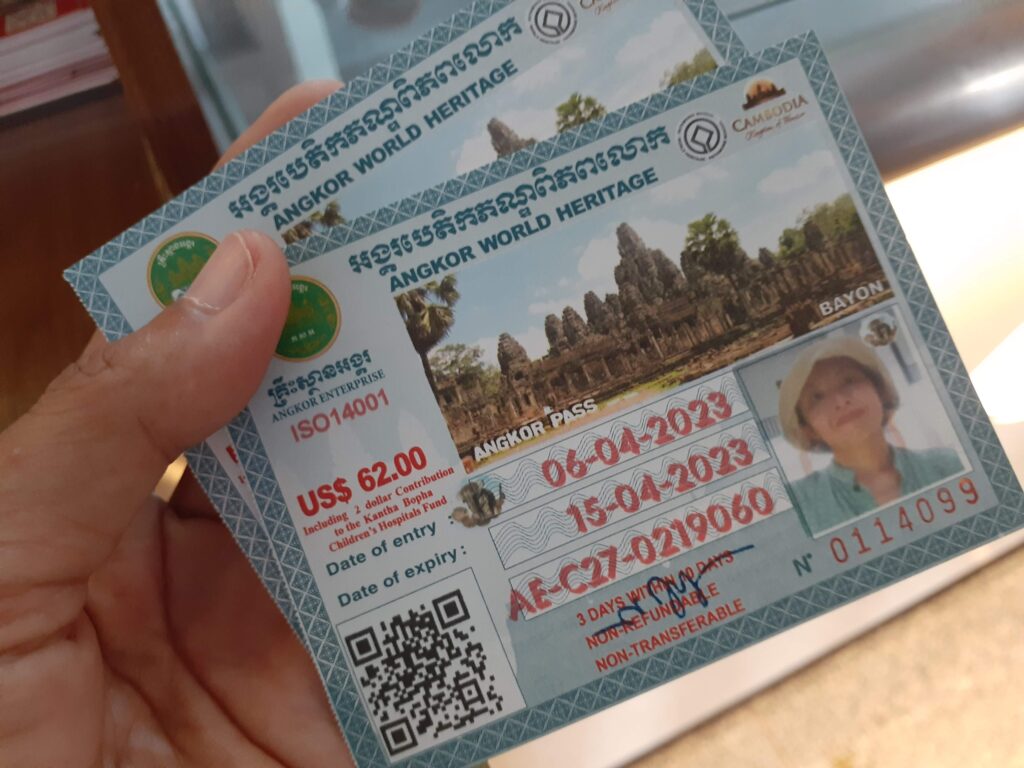
Once you have purchased your ticket, it is time to start visiting the Angkor monuments. The ticket will be checked at the entrance to Angkor Wat and at every other place in the complex, so make sure you don’t lose it!
About Angkor Wat
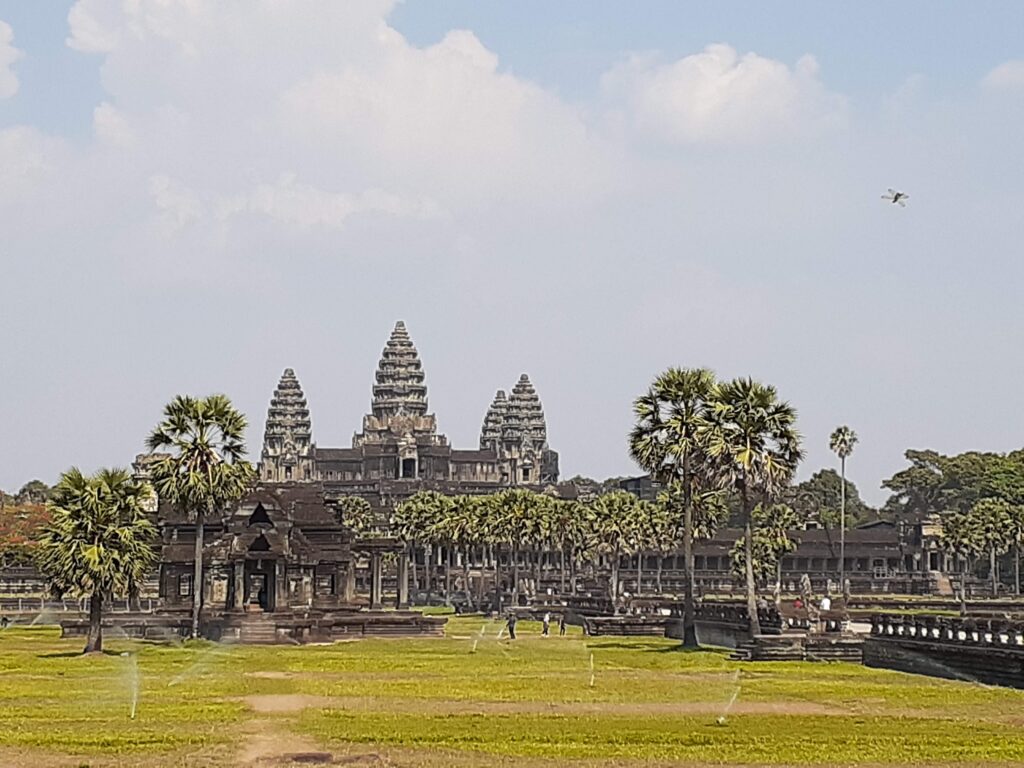
Angkor Wat is, of course, Cambodia’s number one tourist attraction and a UNESCO World Heritage Site (cultural heritage). It is one of the Angkor monuments and is a huge temple representing the archaeological complex, built in the 12th century by Suryavarman II as a Hindu temple dedicated to Lord Vishnu, but later converted to a Buddhist temple in the late 16th century, where it remains today as a Theravada Buddhist temple.
In Khmer, Angkor means ‘royal city’ and Wat means ‘temple’. It is considered a masterpiece of Khmer architecture and is depicted on the Cambodian national flag.
Angkor Wat was built over a period of more than 30 years during the reign of Suryavarman II, but parts of it remained unfinished until the reign of Jayavarman VIII in the late 13th century, when renovations were carried out and an approach road was built from the west.
Angkor Wat first became known to Europeans when the Frenchman Henri Muo visited the site in 1860 and his travelogue was published in a magazine in 1863. However, he was not the first to introduce Angkor Wat, as several other Westerners had visited the site before him.
Full-scale research on Angkor Wat had to wait until the 20th century, when the province of Siem Reap, which included Angkor, became French territory in 1907 and the French Far Eastern Institute in Saigon set up an office for the conservation of Angkor’s monuments, which was responsible for the conservation and restoration of the temple from then until the 1970s. The work included the removal of earth, sand and trees from the site, relocation of the temples and the construction of a tourist road.
After Cambodia gained independence in 1953, Angkor Wat became strongly associated with nationalism: in 1972, the Far Eastern Institute was forced to leave Cambodia due to the Cambodian Civil War, and in 1975 the Democratic Kampuchea (Pol Pot) regime took control.
In 1979, the Khmer Rouge, forced from power, made the area their home. This was because Angkor Wat was both a temple and a fortress. Surrounded by a moat and ramparts, it has a central tower, perfect for looking down on the surroundings. Furthermore, it has the advantage of being an important cultural heritage site, which makes attackers hesitant to attack. However, this led to further damage to the Buddhist statues in the temple.
Is an afternoon visit to Angkor Wat better?
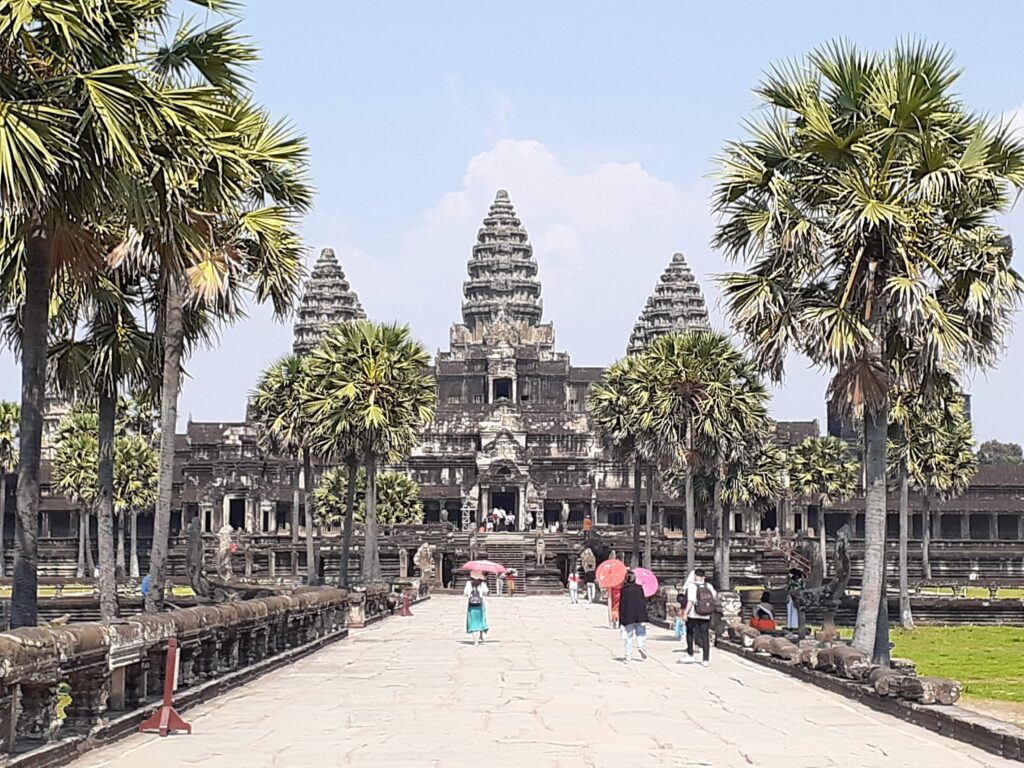
Angkor Wat has its main gate on the west side and this is the starting point for most visitors. The afternoon is said to be more suitable for photography than in the morning, but depending on the time of year, Siem Reap can be very hot in the afternoon. Take precautions against heat and sunburn! It was 38C when we visited.
Morning photography is probably not the best, but some travellers go out to see Angkor Wat at sunrise. Most Angkor monuments are actually open from 7.30am to 5.30pm.
Crossing bridges
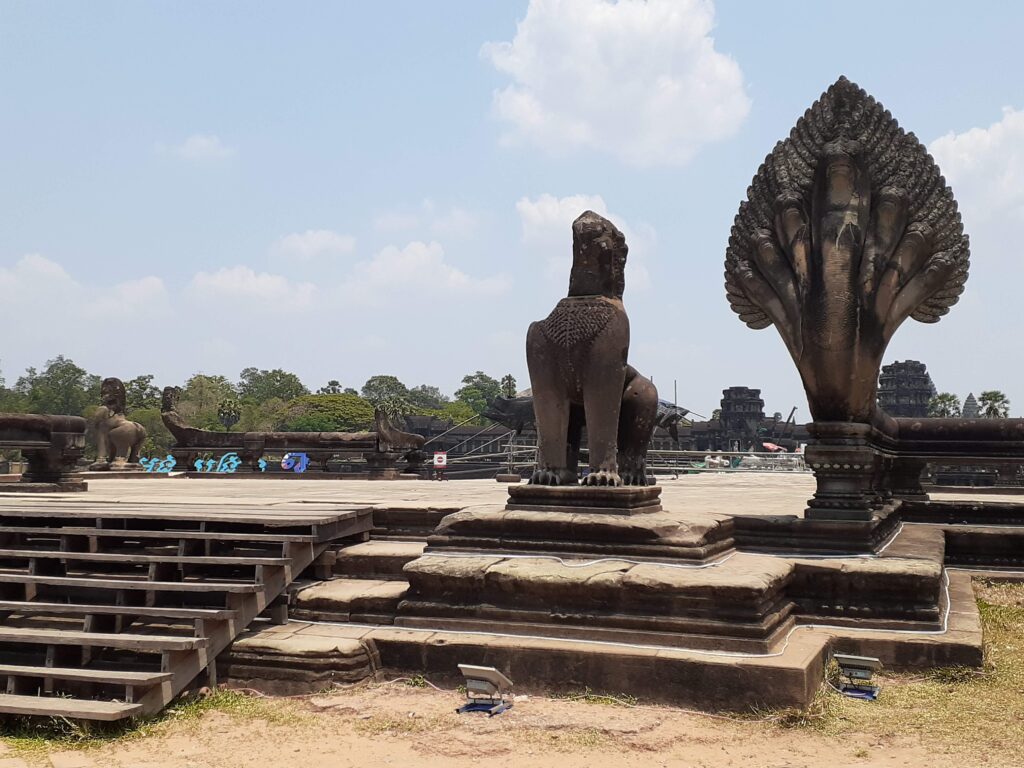
Angkor Wat’s precincts, measuring 1,500 m east to west and 1,300 m north to south, are surrounded by a 190 m wide moat. The moat at the West Main Gate is crossed by a crossing bridge bordered by the snake god Naga towards the West Main Gate.
Seven Naga can be seen in the picture, but the body of the snake on the bridge parapet has fallen into the moat and is only partially visible.
This sandstone crossing bridge is no longer accessible to travellers, and we entered the temple via a floating bridge set up to the south of it.
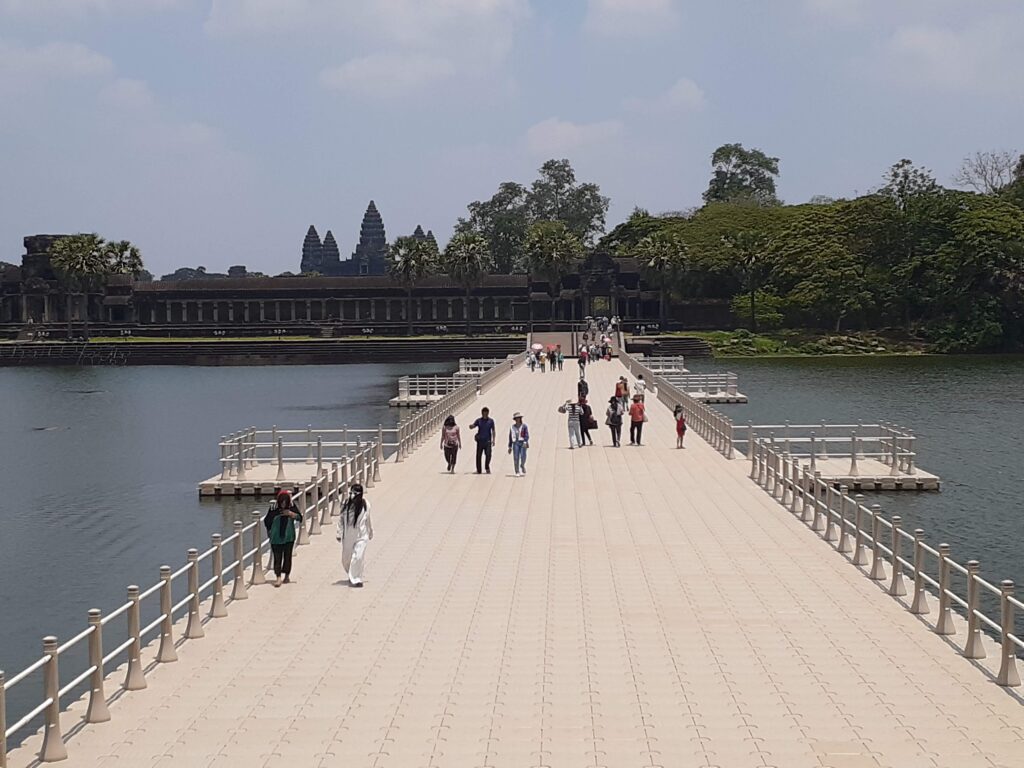
After crossing the bridge is the West Gate. The perimeter wall leading to the West Gate measures 1,030 m east to west and 840 m north to south, and is built of laterite.
West Gate
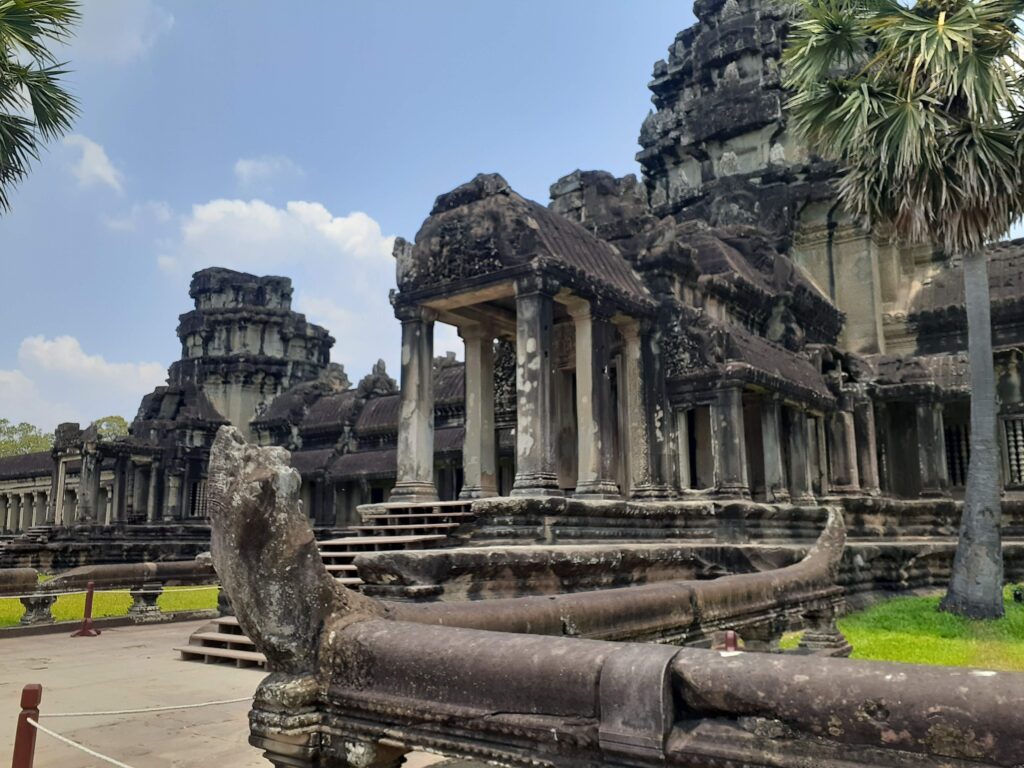
Seodaemun is 230 m long from north to south and is equipped with three towers. The central King’s Gate is flanked on either side by a seven-headed Naga. Two gates open on either side of the King’s Gate.
After passing through the West Gate, a pathway bordered by a serpent parapet leads to the forecourt via a 540 m long pathway.
Approach road and Library
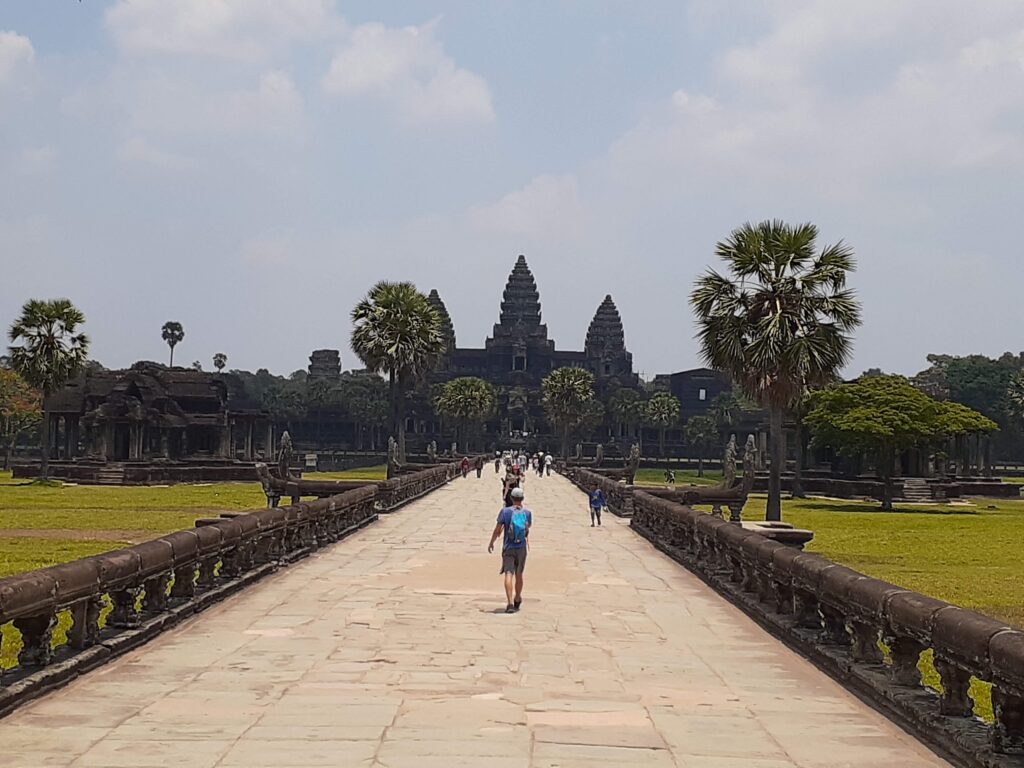
The vestibule is flanked on the north and south sides by the Sutra Repository and the Sacred Pond.
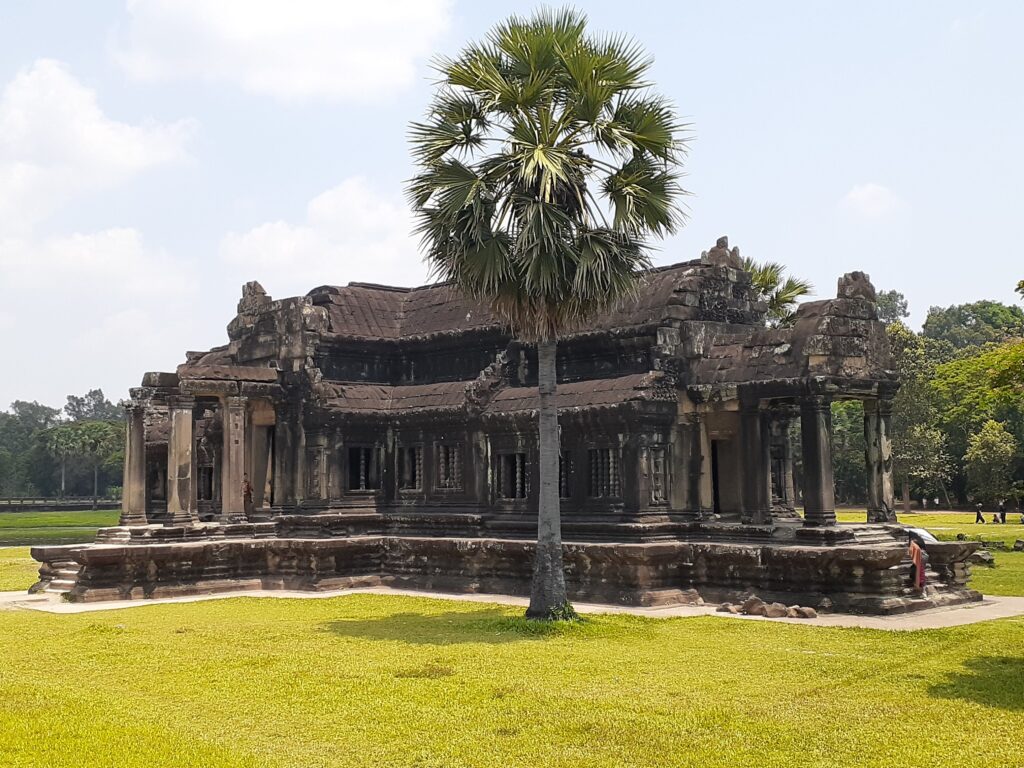
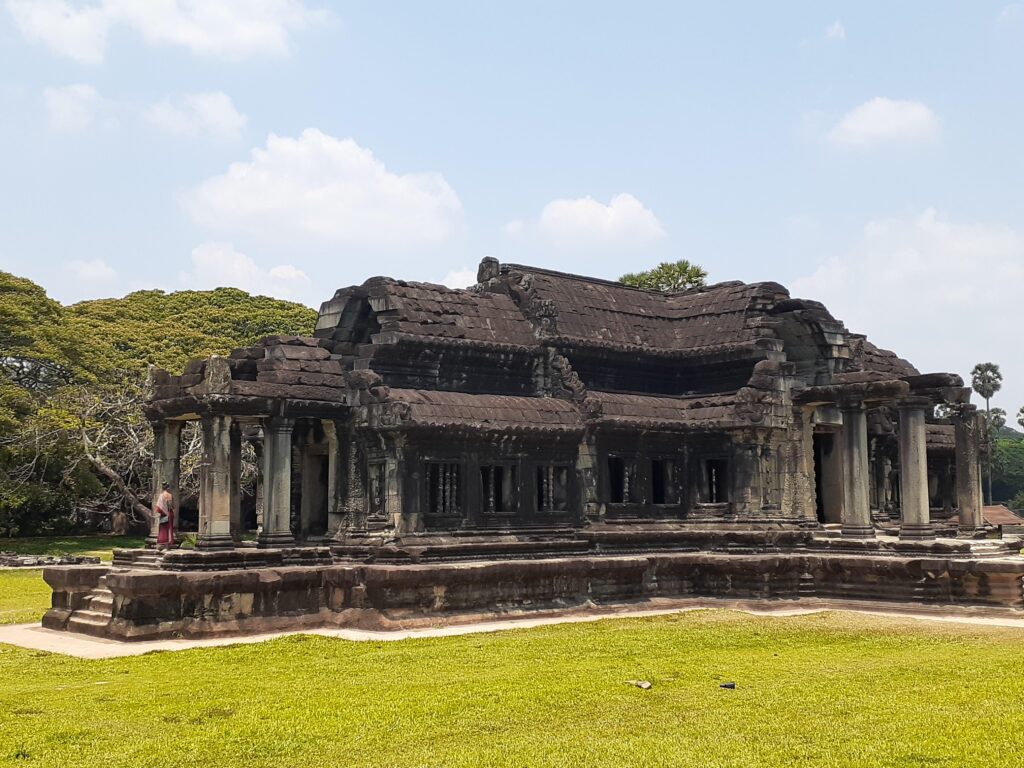
Angkor Wat is a huge temple, so the sutra storehouses are also large.
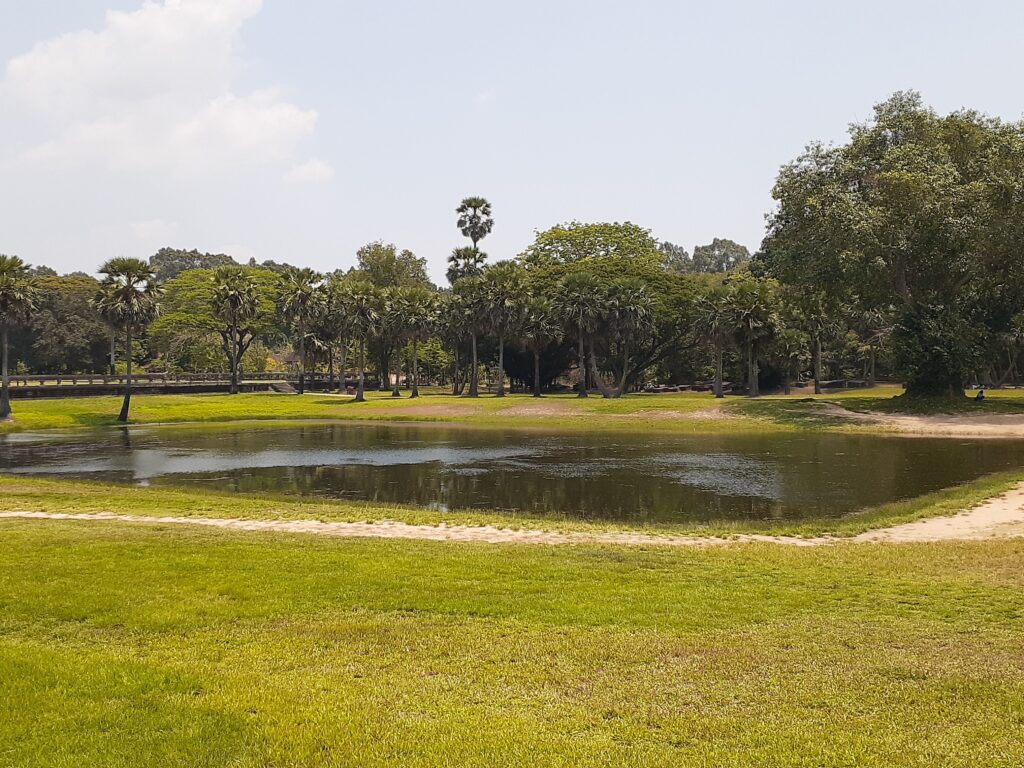
Beyond the forecourt is the main hall with five shrines surrounded by a triple corridor.
Platform to the three-storey corridor
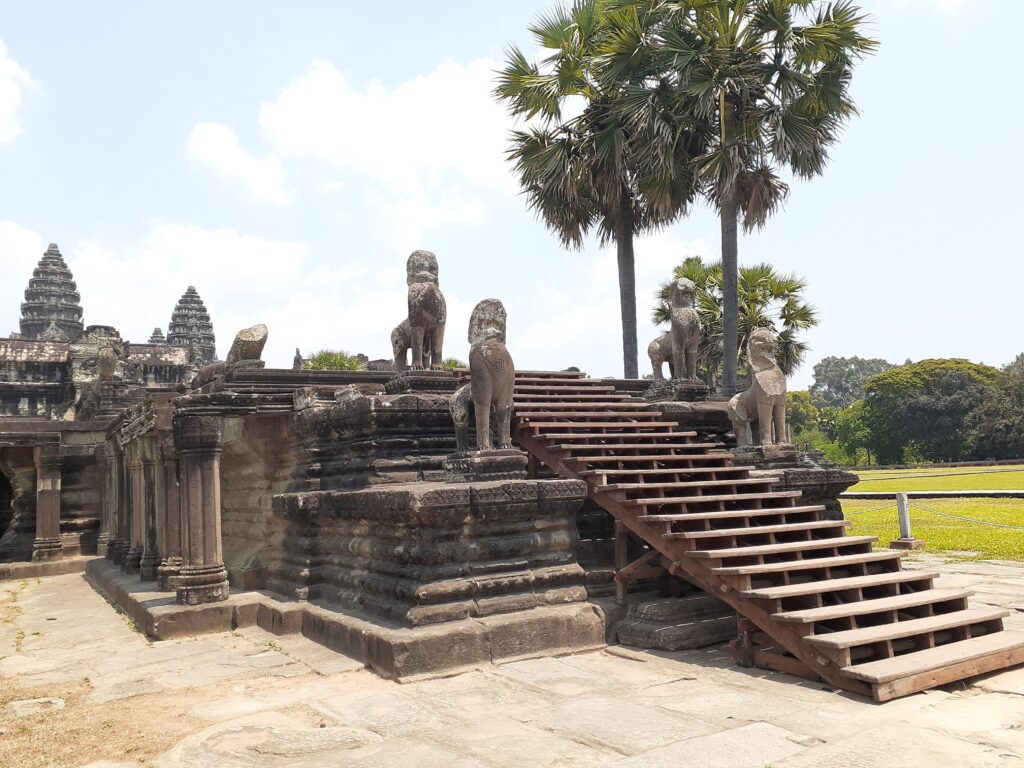
The three-layered cloister is built on a terrace and steps lead up to a platform with three gradually rising cloisters, with the five towers positioned at the highest point.
First corridor
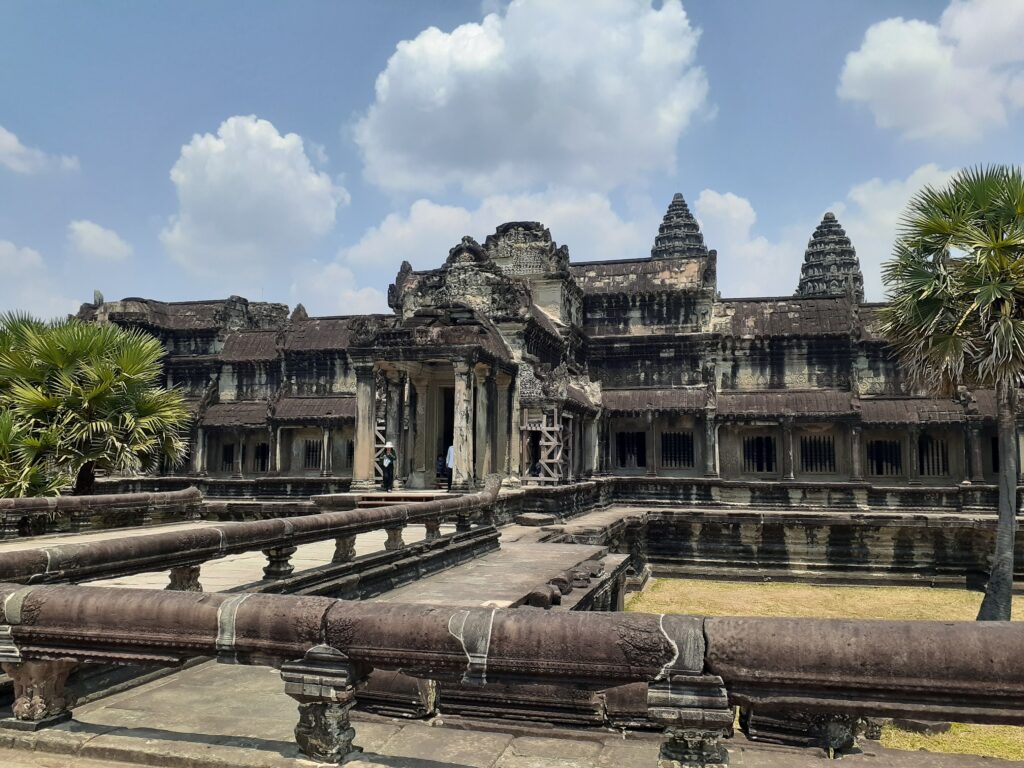
The walls of the First Corridor, which stretches 200m from east to west and 180m from north to south, are covered with reliefs, making it one of the main attractions.
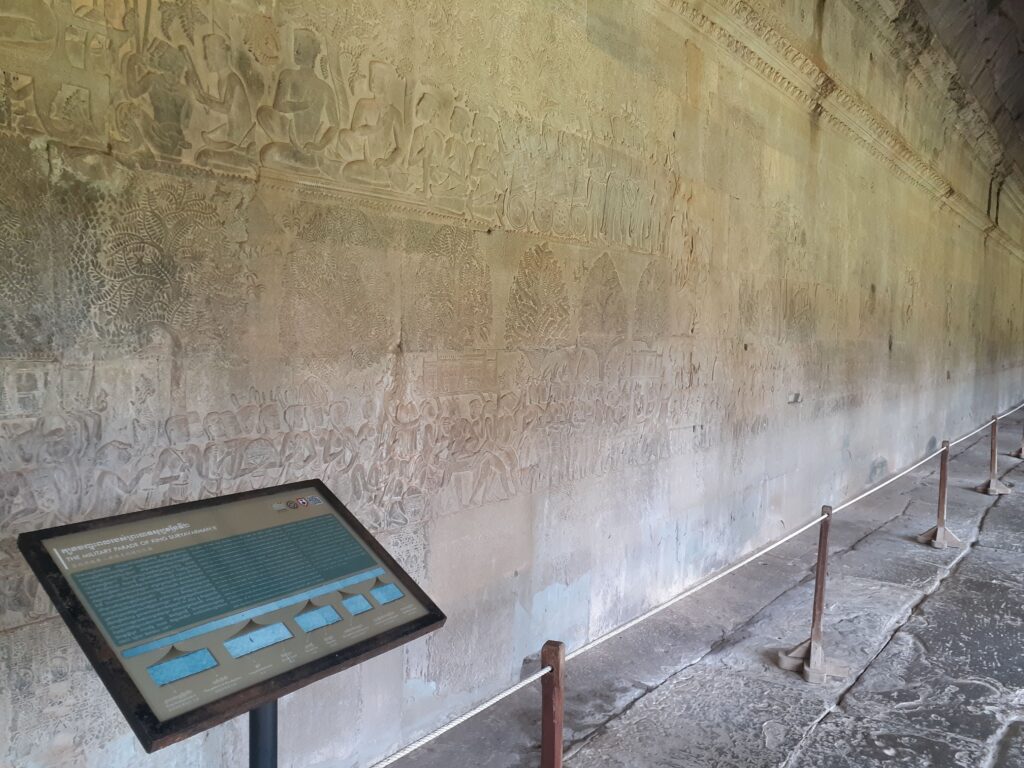
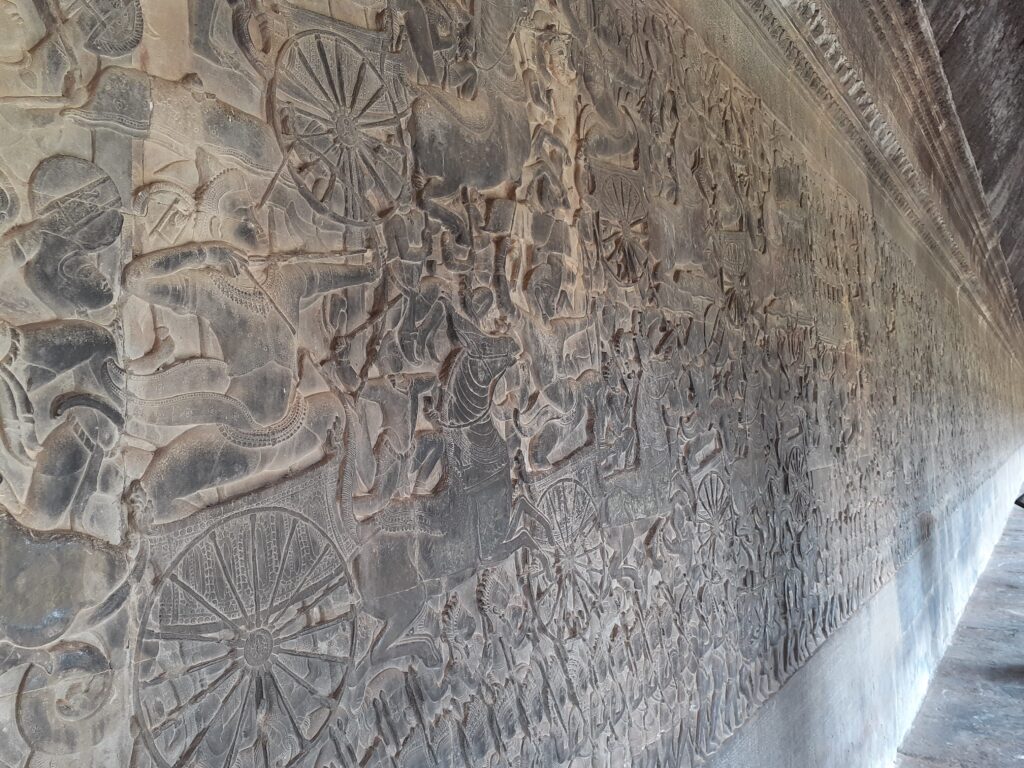
Eight different stories unfold in the north, south, east and west directions, inspired by the Indian epic Mahabharata, the Ramayana, the stirring of the milk sea, heaven and hell, etc.
The sculptures in the north-east and north depicting scenes such as the incarnation of Lord Vishnu, Krishna, fighting the monster Vana are thought to date from the mid-16th century onwards.
Cross Corridor

The Cross Corridor runs between the First and Second Corridors, with the Sutra Repository to the north and south of it. The four courtyards enclosed by the Cross Corridor were once filled with rainwater, where worshippers used to purify themselves.
Second corridor
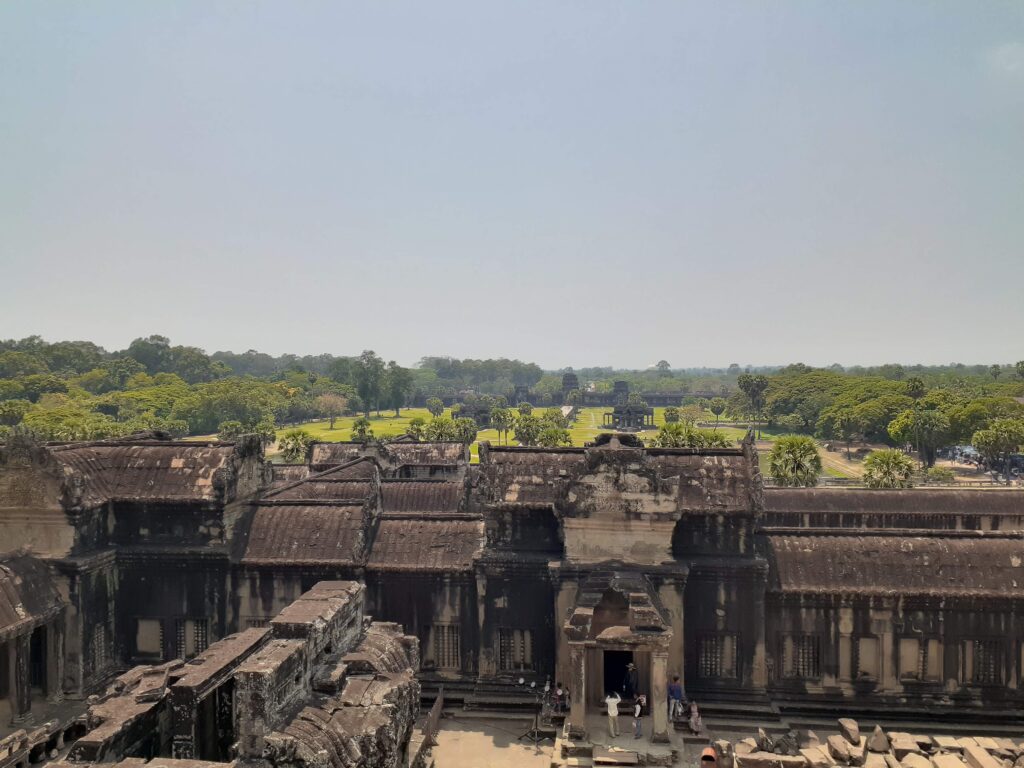
From the Cross Corridor, stairs lead up to the Second Corridor, which stretches 115 metres east to west and 100 metres north to south. The second corridor is quite simple, with only a few Buddha images. There are no reliefs, but instead a row of windows.
After the second corridor, a stone-paved courtyard leads to the third corridor and shrine.
Third corridor and central shrine

The Third Corridor is a square 60 metres and is 13 metres higher than the Second Corridor and a steep flight of steps leads up to the inside.

Spires are placed at the four corners of the cloister, surrounding the most sacred central shrine. The 65 m high central shrine is believed to have once housed Lord Vishnu, but the main body has never been found. Four Buddha images have been installed, but they were placed there in later times.
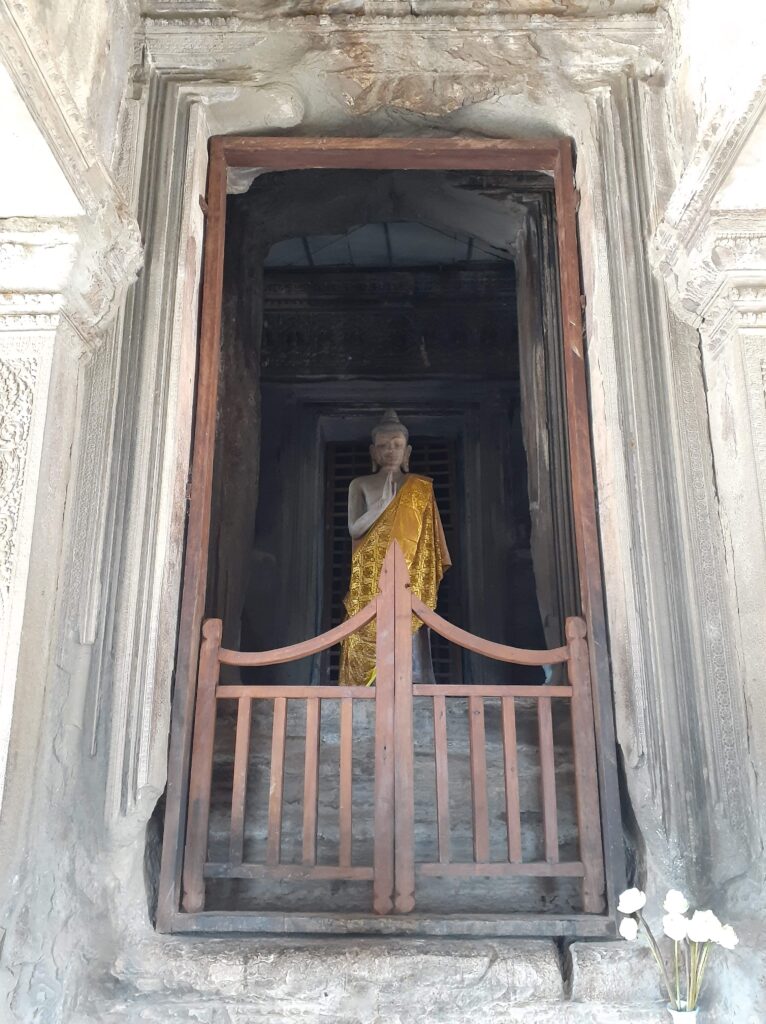
The walls of the third corridor are carved with statues of goddesses known as ‘devata statues’. These statues are also found in the second gallery and are said to have been modelled on courtesans and dancing girls.
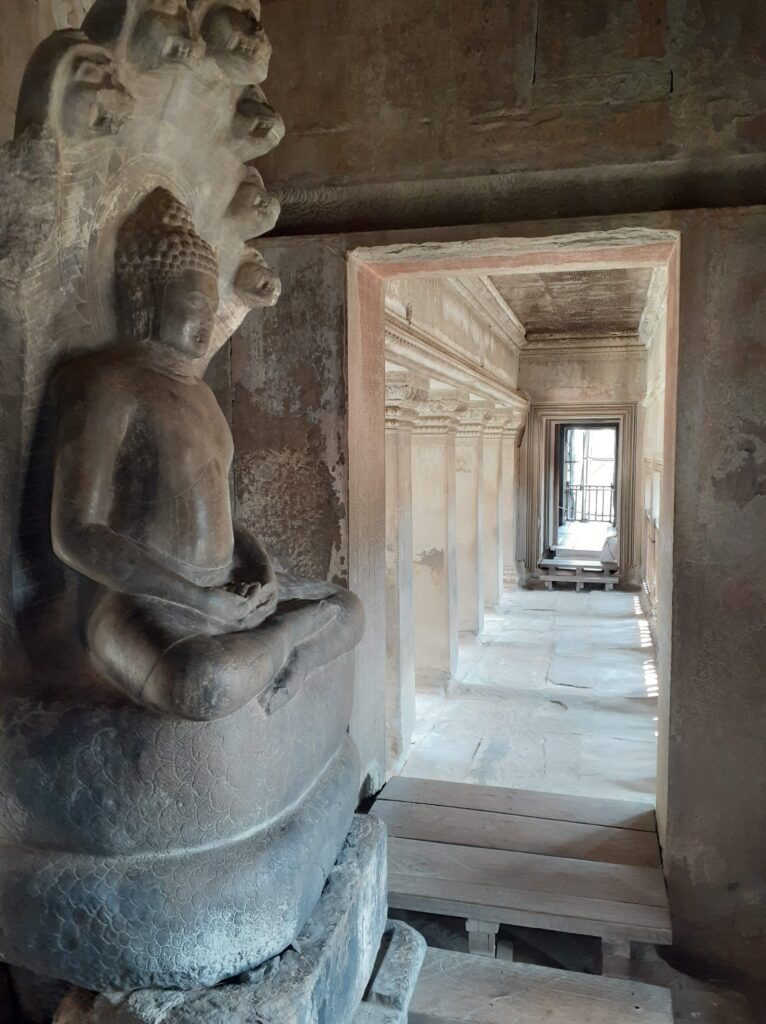
Angkor Wat is said to have been built to worship Lord Vishnu, who was worshipped by Suryavarman II, but as its main gate faces west, symbolising the ‘direction of death’, some believe it was built as a cemetery for Suryavarman II. It is said that the tomb of Suryavarman II is enshrined in the centre of the central shrine, 22 metres deep underground.
After visiting Angkor Wat, visit Angkor Thom
The first day in Siem Reap was primarily a visit to Angkor Wat, although on this day, we still had some time to kill so we went on a partial tour of Angkor Thom, which is not far from Angkor Wat.
The rest of the day is summarised as a visit to Angkor Thom.
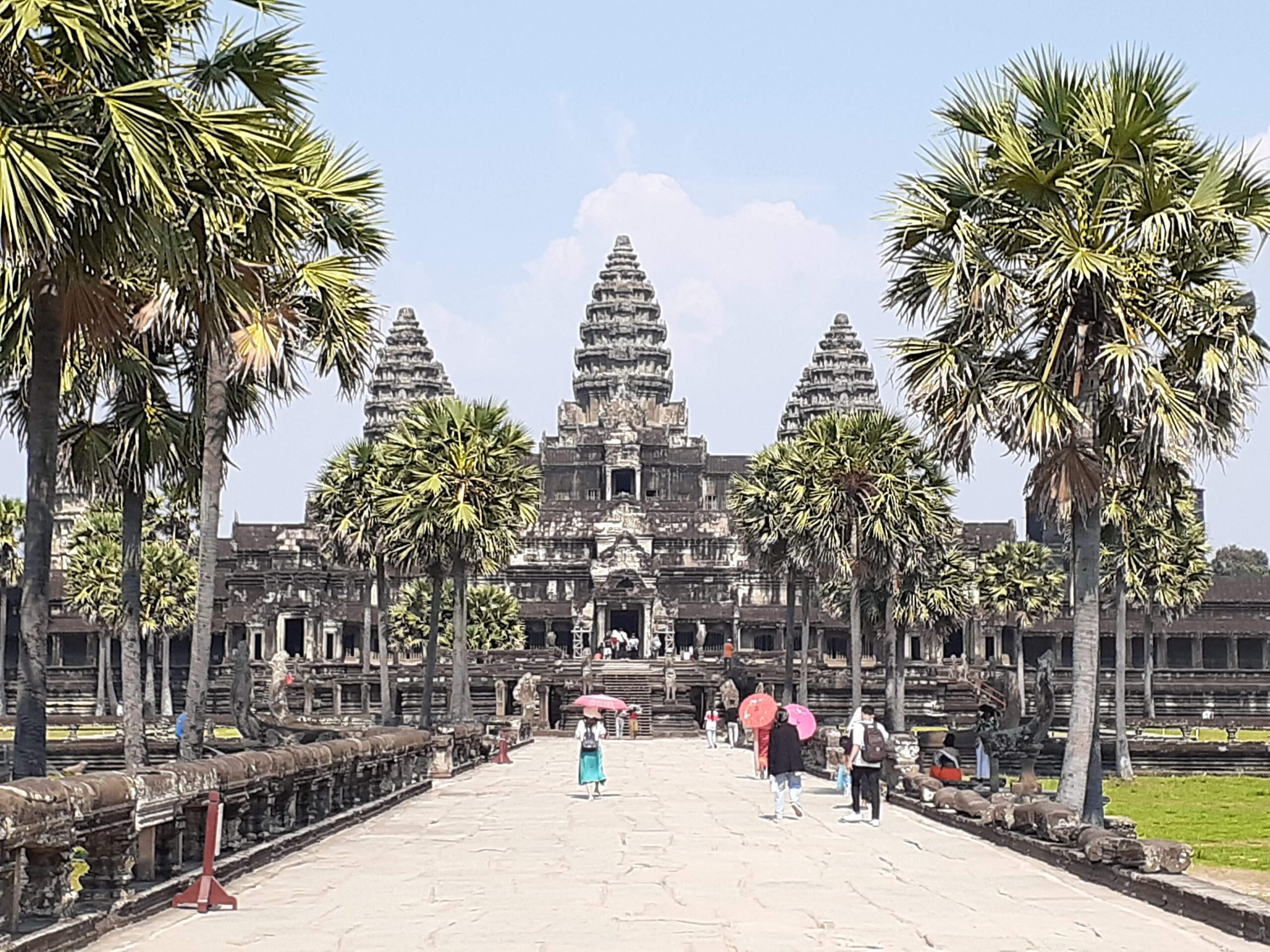


Comment